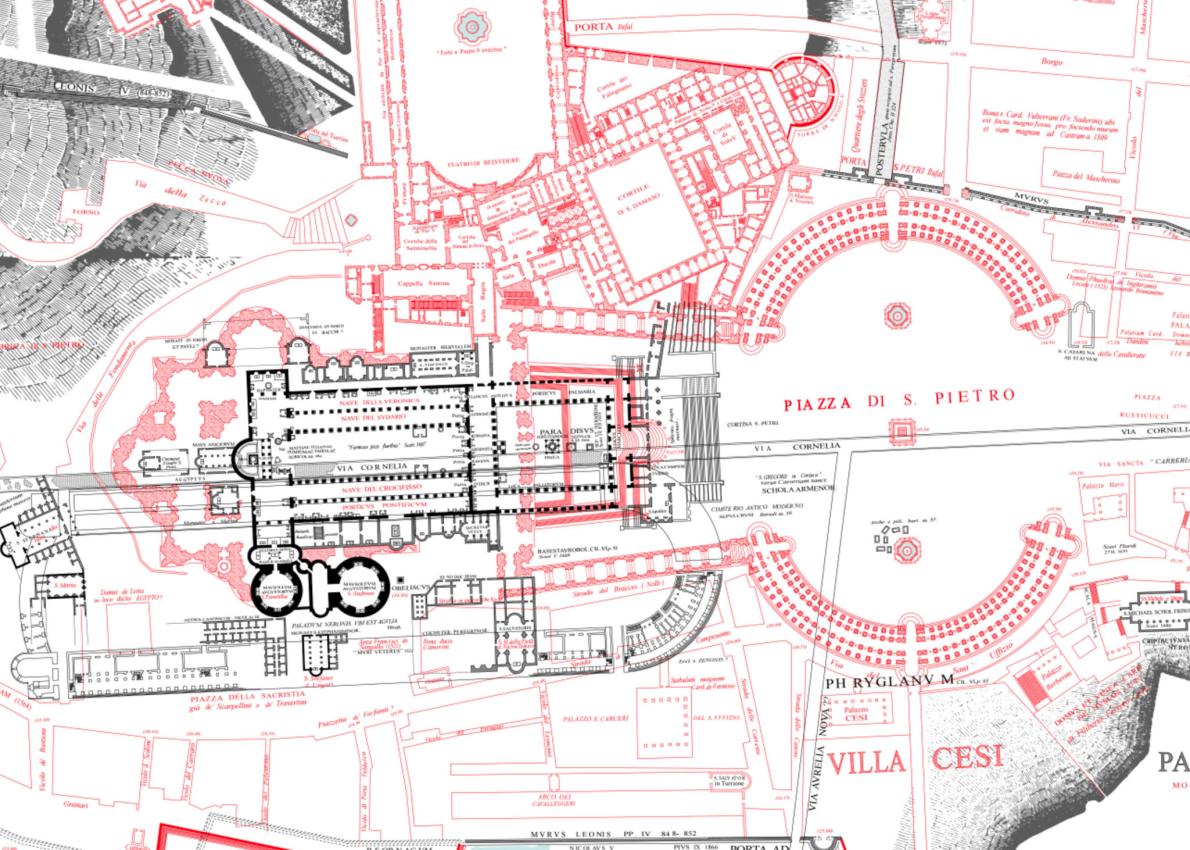
Rodolfo Lanciani Forma Urbis Romae Mappe, Cartografia, Roma antica
Rodolfo Lanciani, a 19th-century archaeologist, used his own money to create Forma Urbis, a series of 46 detailed maps of the ancient city. The work had never been surpassed—until now. And the.

R. Lanciani, Forma Urbis Romae, Roma 18931901 Ancient rome, Historical architecture, Fantasy
Digitizing Lanciani's collection is part of a larger effort to recreate the spatial history of Rome, a project named "Mapping Rome," that Steiner and Tice began around 2004 with Allan Ceen.

Insula Tiberina; Theatrum Marcelli; Rodolfo Lanciani Roma, Mappe, Roma antica
"The Lanciani collection is a stunningly rare personal collection by one of the premier, pioneering archeologists of Rome," says Nicola Camerlenghi, assistant professor of art history at Dartmouth College. "This was Lanciani's working collection, amassed by a man who needed this material to conduct his research, which aimed to understand the city over the course of thousands of years.

Lanciani Forma Urbis Romae Charta Roma Mappe di Roma Personalizzate nel 2020 Mappe
The "Fondo Rodolfo Lanciani" is currently housed at the Biblioteca Nazionale di Archeologia e Storia dell'Arte at Rome's Palazzo Venezia. Assembled over the course of Lanciani's lifetime, the collection is akin to a "paper museum" whose size and scope compare to that of the famous seventeenth century antiquarian Cassiano dal Pozzo.

Rodolfo Lanciani Forma Urbis Romae Rome, Rome map, Historical architecture
Interactive Nolli Map Project Giuseppe Vasi's Rome Rodolfo Lanciani Digital Archive The Urban Legacy of Ancient Rome Forma Urbis Romae (in progress) Mapping Rome

Forma Urbis Romae by Rodolfo Lanciani (1032CA) — Atlas of Places
As an archeologist and topographer of Rome, Lanciani lived at a very propitious time for he witnessed first-hand many of the archeological excavations taking place in the city during the so called 'construction fever' period between 1870 and the end of the century.

Forum Romanum; Rodolfo Lanciani Ancient Rome, Ancient Cities, Fantasy World Map, Architecture
Drawings, prints and photographs were divided by Lanciani (and later by INASA) in individual folders based on type (churches, roman baths, etc.) or site (Colosseum, Pantheon, etc.). This website preserves those divisions and offers a digitized version of 4,000 selected images, mostly portraying locations inside the Aurelian Walls.

This Enormous 100YearOld Map of Rome is Still the City's Best
Media in category "Maps and plans of ancient Rome by Rodolfo Lanciani" The following 77 files are in this category, out of 77 total. Aedes Iovis (Lanciani).jpg 632 × 477; 273 KB Plan Pantheon.gif 936 × 582; 79 KB Apostolic Palace (Lanciani).jpg 1,772 × 2,425; 2.99 MB Arco di Graziano, Valentiniano e Teodosio (Lanciani).jpg 796 × 783; 580 KB

Rodolfo Amedeo Lanciani (1 January 1845 22 May 1929) was an Italian archaeologist, a
Among an abundance of maps of Rome, Nolli and Lanciani's maps are doubtless the most comprehensive and detailed ones of modern and ancient Rome respectively.

Rodolfo Lanciani, Forma Urbis Roma (Milan, 18931901), plate XXIX. Mappe, Storia
© Copyright University of Oregon 2017, All Rights Reserved. Open Rome

Online Free .pdf version of Lanciani’s “Forma Urbis Romae” Roger Pearse
Rodolfo Amadeo Lanciani (born Jan. 1, 1847, Rome, Papal States [Italy]—died May 21, 1929, Rome) Italian archaeologist, topographer, and authority on ancient Rome who discovered many antiquities at Rome, Tivoli, and Ostia. He published a 1:1,000-scale map of classical, medieval, and modern Rome in Forma Urbis Romae (1893-1901).

New fragment from dispersed plan of Ancient Rome on view at Ara Pacis Milestone Rome
Lanciani had an ambitious goal: to produce a detailed map of ancient Rome. His magnum opus, Forma Urbis Romae , used fragments of a large, third-century marble map of the city to reconstruct how.

Forma Urbis Romae Mapa de la Roma antigua de Rodolfo Lanciani MundoWikipedia
Lanciani's Forma Urbis Romae is a cartographic synthesis of the history of Rome, as it depicts the city's diachronic development from ancient to post-classical phases. The Forma Urbis Romae is a splendid cartographic exemplar, printed in serial installments over a ten-year period leading up to its definitive publication in 1901.

Transtiberina; Rodolfo Lanciani Ancient rome, Map, History
It is a set of 46 detailed maps of ancient Rome, issued in 1893-1901. The maps measure 25 by 36 inches, at a scale of 1:1000. The map outlines ancient features in black, early modern features (based on the Nolli map of 1748) in red, and modern features (as of 1893) in blue.

Exhibition features interactive maps of Rome School of Architecture & Environment
Rodolfo Lanciani's 1902 archeological map of Rome, based on Nolli, depicts the city as a series of layers extending from antiquity to the beginning of the 20th century. By carefully comparing these two cartographic sources, one can create a clearer understanding of Rome's spatial history and how, among other things, Rome's famous seven.

...dalla famosa mappa di Rodolfo Lanciani, Forma Urbis, nella quale la città antica e quella
One thing that Piranesi, Nolli, and Lanciani had in common was an awareness of the fragmentary remains of a much older depiction of the city's layout, the so-called "Severan marble plan" that dates to the third century C.E. A fragment of the Severan marble plan showing the Porticus of Octavia (Capitoline Museums) (photo: Sailko, CC-BY SA 3.0)